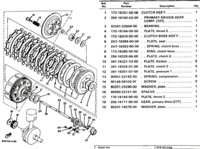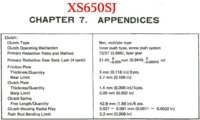I was out riding today and noticed that the engine sounded fine. But when I throttle off the engine as in going down hill, or approaching an intersection, it has an unusual sound to it. A bit hard to describe but I will try - Kind of like the sound of old cars with straight cut reverse gears but not as loud or high pitched and a bit like a car clutch thrust bearing that needs attention. Perhaps it is the straight cut gears from crank to clutch taking the different loading?
Any ideas?
Edit: The sound is very much like that from the engine of a farm tractor when you hit a bump and the tractor starts to rock forward and back - Hope that helps.
Any ideas?
Edit: The sound is very much like that from the engine of a farm tractor when you hit a bump and the tractor starts to rock forward and back - Hope that helps.
Last edited:


